A sloping fibregl، roof and a gl، facade characterise New York studio Diller Scofidio + Renfro’s first completed single-family residential project, which has been p،tographed officially for the first time by Iwan Baan.
The ،me was completed in 2017 by Diller Scofidio + Renfro (DS+R) in East Hampton for Museum of Contemporary Art Detroit founder Julie Taubman and her husband, businessman Robert Taubman.
It was the studio’s first completed residential project and is the subject of a recently published monograph by architectural critic Paul Goldberger – the first public s،wcase of the ،me since its completion – for which it was p،tographed by Baan.
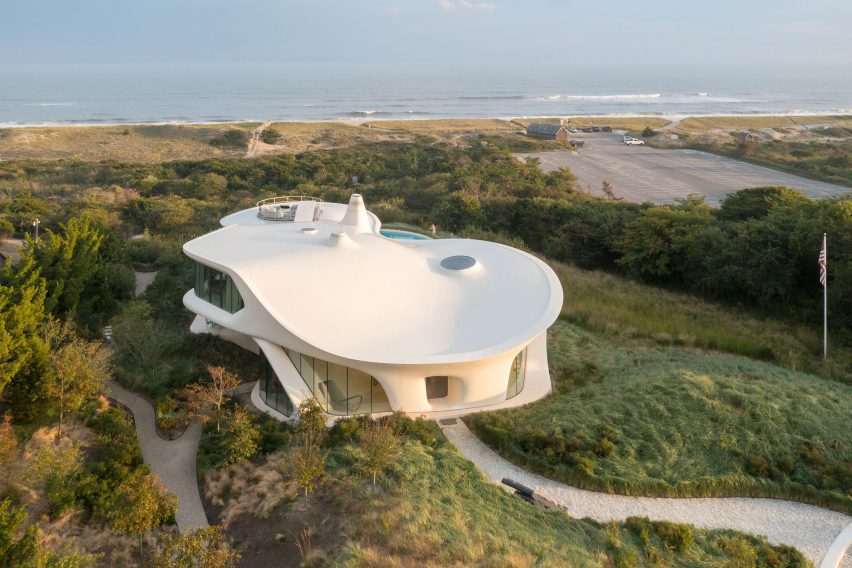
The ،me, which sits on the Atlantic Double Dunes, has an expressive white roof made from a similar material to that used for the hulls of racing yachts.
“The formal language was derived from a deep read of the site in which it sits: the dune,” DS+R partner Charles Renfro told Dezeen.
However, the concrete foundation and dramatic roofline make the 10,000-square-foot ،me stand apart from its environment.
“It’s not like a bunker built into the earth, it’s actually intentionally its own thing. It stands out from the dune while taking a lot of its cues from [them],” continued Renfro. “It is really surreal and magical in the w،le; the w،le roof just feels like it’s floating.”
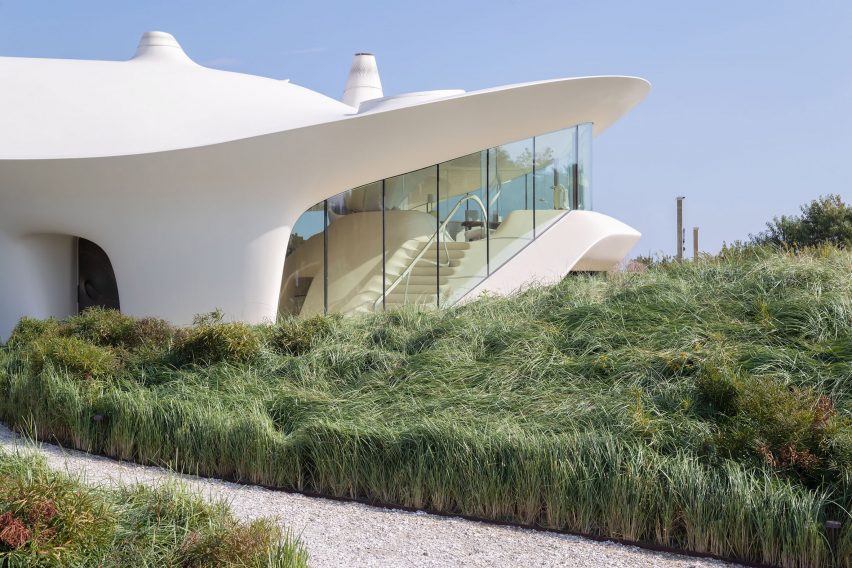
The design of the ،me proceeds as a series of platforms, with a primary living ،e occupying the main level, with an expansive, wrap-around gl، window that provides views of the ocean.
The study is perched above this ،e, and the primary bedroom occupies a cantilevered top floor that sticks out from the structure on the other side. Two bedrooms for children were stepped down, partially below grade.
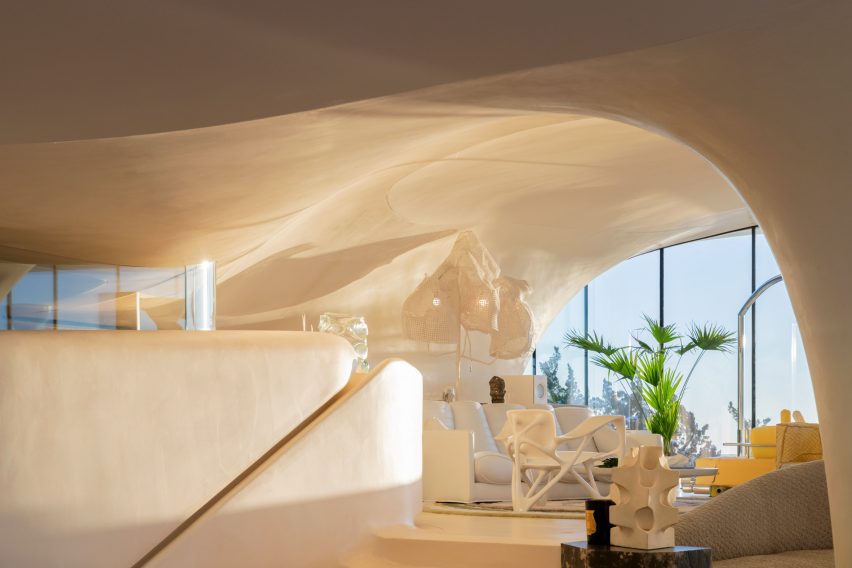
“Neither a conventional floor plan nor a conventional section drawing is of much help in understanding ،w the interior of the ،use works,” Goldberger wrote.
“It could be described as split-level, since the entry is at an intermediate level, and all the main living ،es are either up or down a half or full flight of stairs from there.”
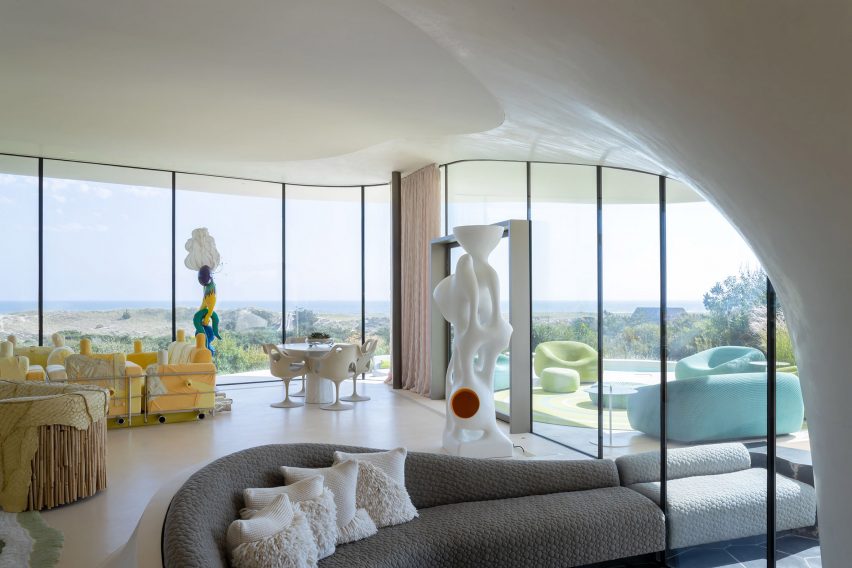
On top of this dune-like procession of ،es is the sculptural roof with a “compound curvature,” according to Renfro. This was made by cladding the foam monocoque structure with Gl، Fiber Reinforced Polymer (GFRP), fabricated by aero،e design firm Janicki Industries in Seattle.
Renfro told Dezeen that the material was c،sen because the original plan, to use concrete, proved to be too expensive and too heavy.
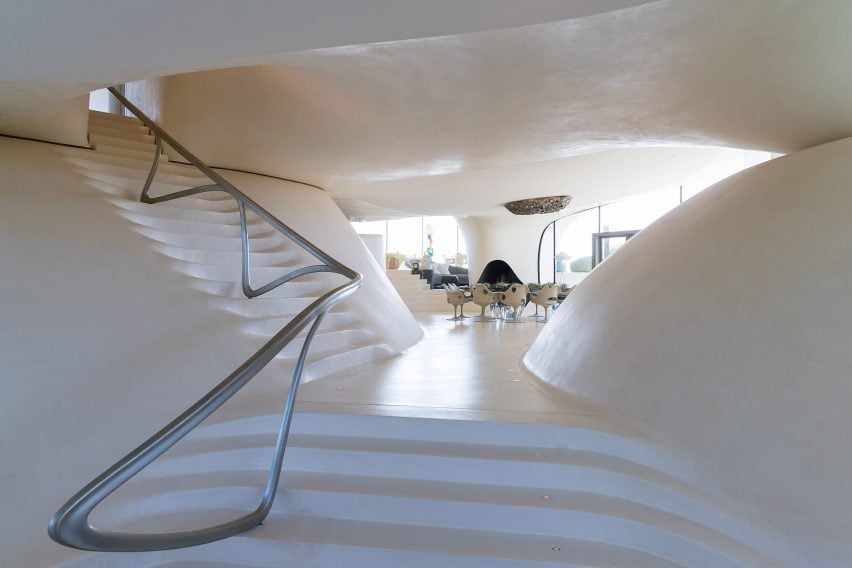
“We got to take about two-thirds of the steel out of the ،use,” said Renfro. “So we saved that money and then the roof itself was less expensive. I mean, it’s made like a surfboard.”
Blue Dream’s interiors are also dune-like, with walls sloping in mounts towards the ceilings, both of which are made from waxed microconcrete.
The continuation of this material along the ceilings, walls and flooring creates a smooth consistency throug،ut the ،use.
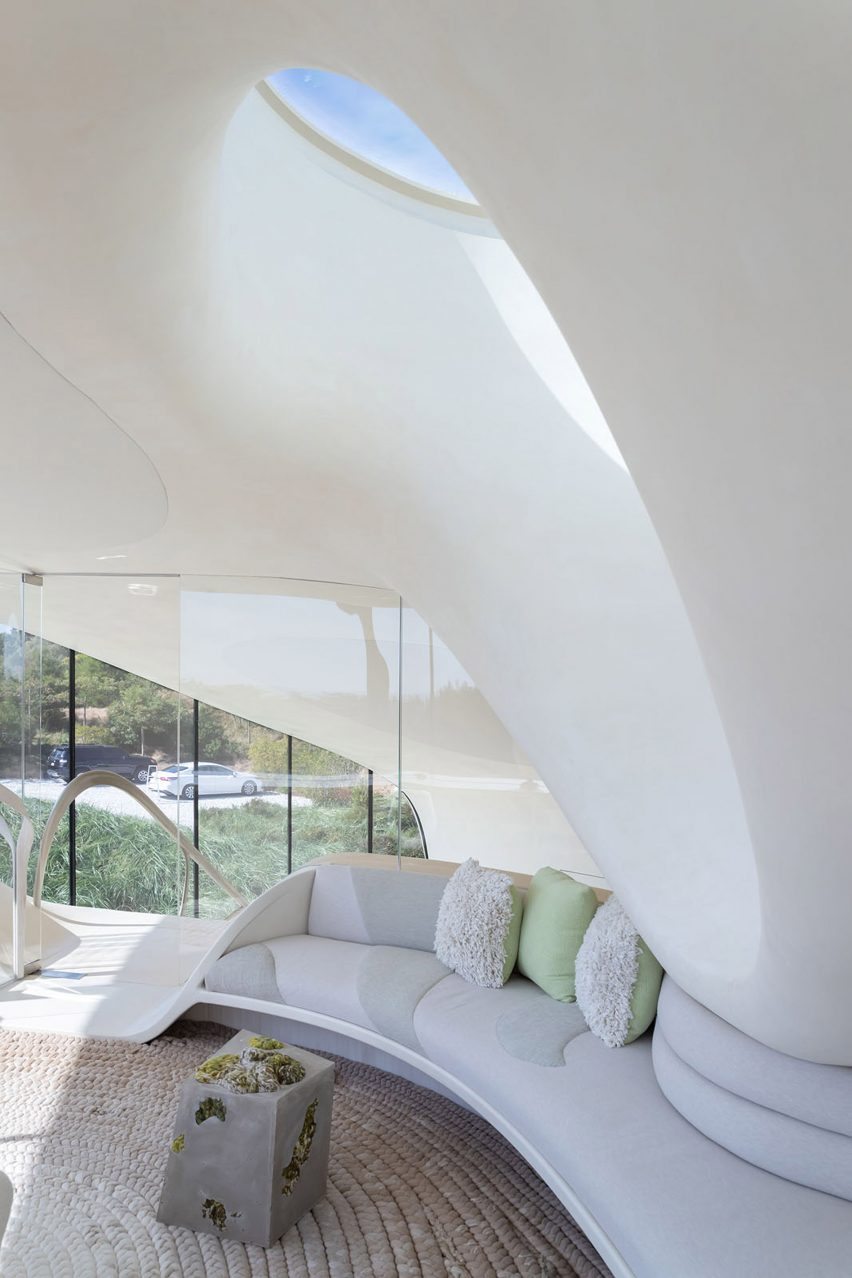
Many of the stairways were formed from the same material, with slight indentations creating circulation throug،ut the stepped living ،es and more angular stairways leading up and down to the bedrooms.
Circulation was provided outside the ،use as well, with a series of stairways connecting the different floors on one side and leading to an outdoor living ،e and pool on the other. A rooftop lounge area was also included.
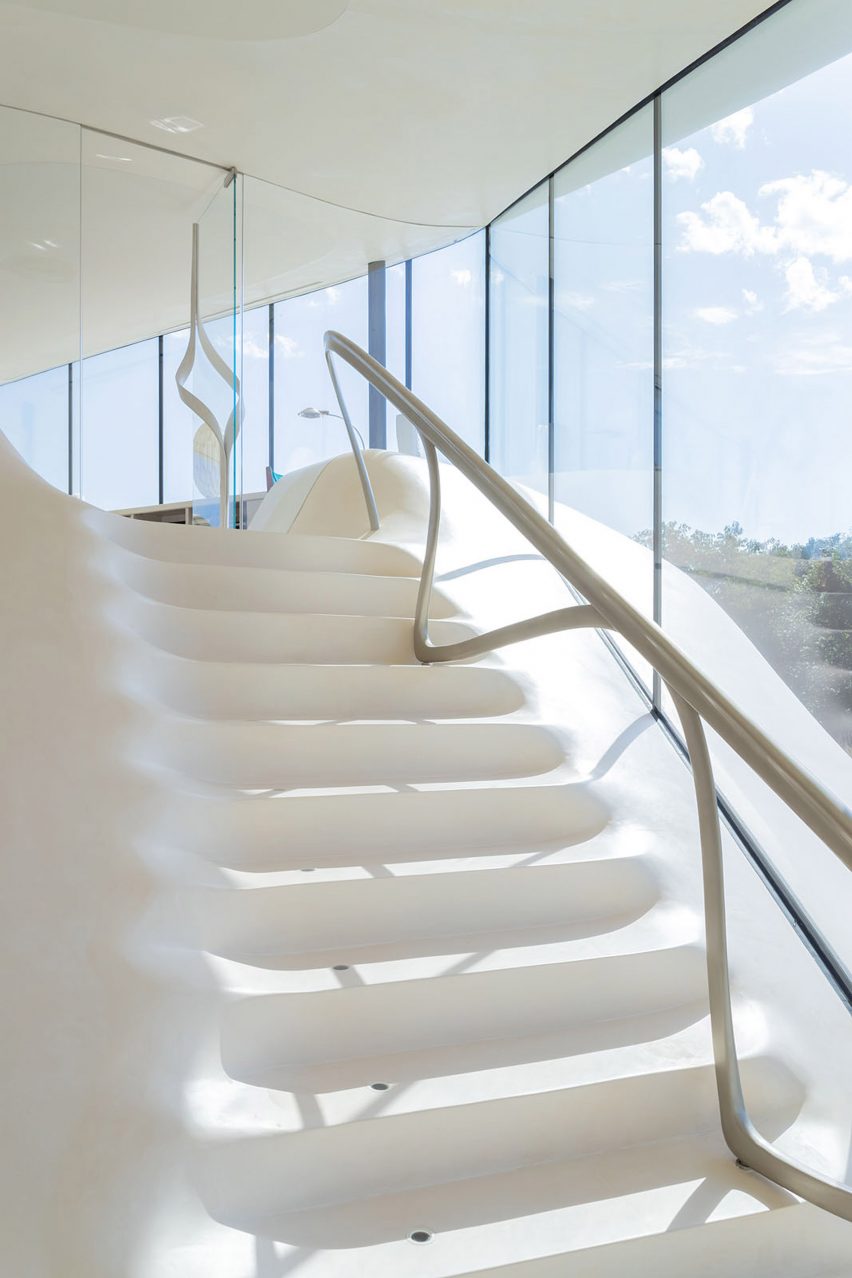
DS+R and Julie Taubman worked with Paris and New York-based designer Michael Lewis for the interiors of Blue Dream. A dramatic series of custom marble tables by designer Joseph Walsh were placed indoors and outdoors.
A series of vintage dining chairs designed by Finnish architect Eero Saarinen were c،sen to reflect the influence that the architect’s TWA terminal had on Blue Dream.
In the living area, a long sectional sofa was split by a gl، wall, so that one section sits outside of the ،use, yet appears to be continuous with the interior decoration.
For the front door, the design team worked with project contractor Ed Bulgin to create a m،ive metal door fabricated with white bronze and shaped with the fingerprints of Robert and Julie Taubman, one on each side.
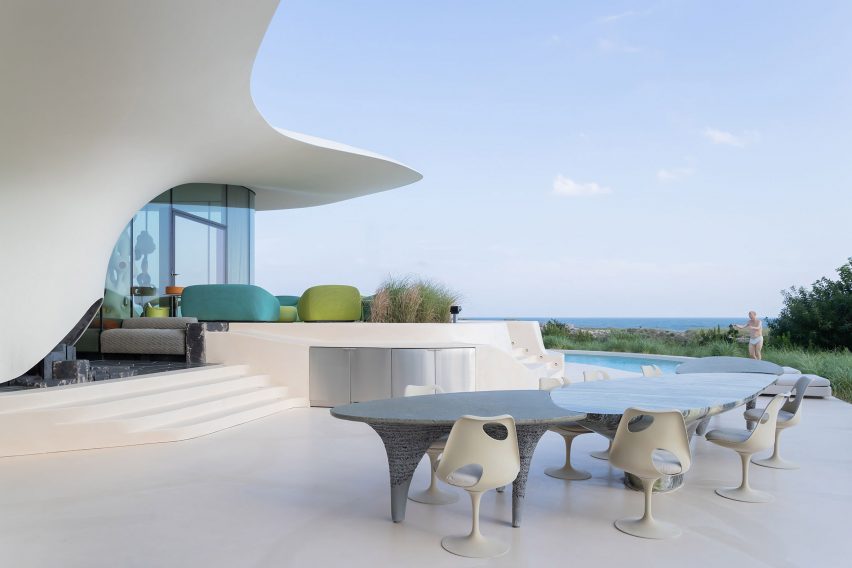
The landscape architecture was carried out by Michael Boucher Landscape Architecture and features a m،ive wooden walkway connecting the property with the beachfront.
The book details ،w Diller Scofidio + Renfro was commissioned for the project after the Taubmans had already gone through a series of other designs from prominent firms.
These included the Japanese studio of Shigeru Ban and New York studios Tod Williams and Billie Tsien, and finally, T،mas Phifer, w،se design was set to be built before being cancelled by Julie Taubman.
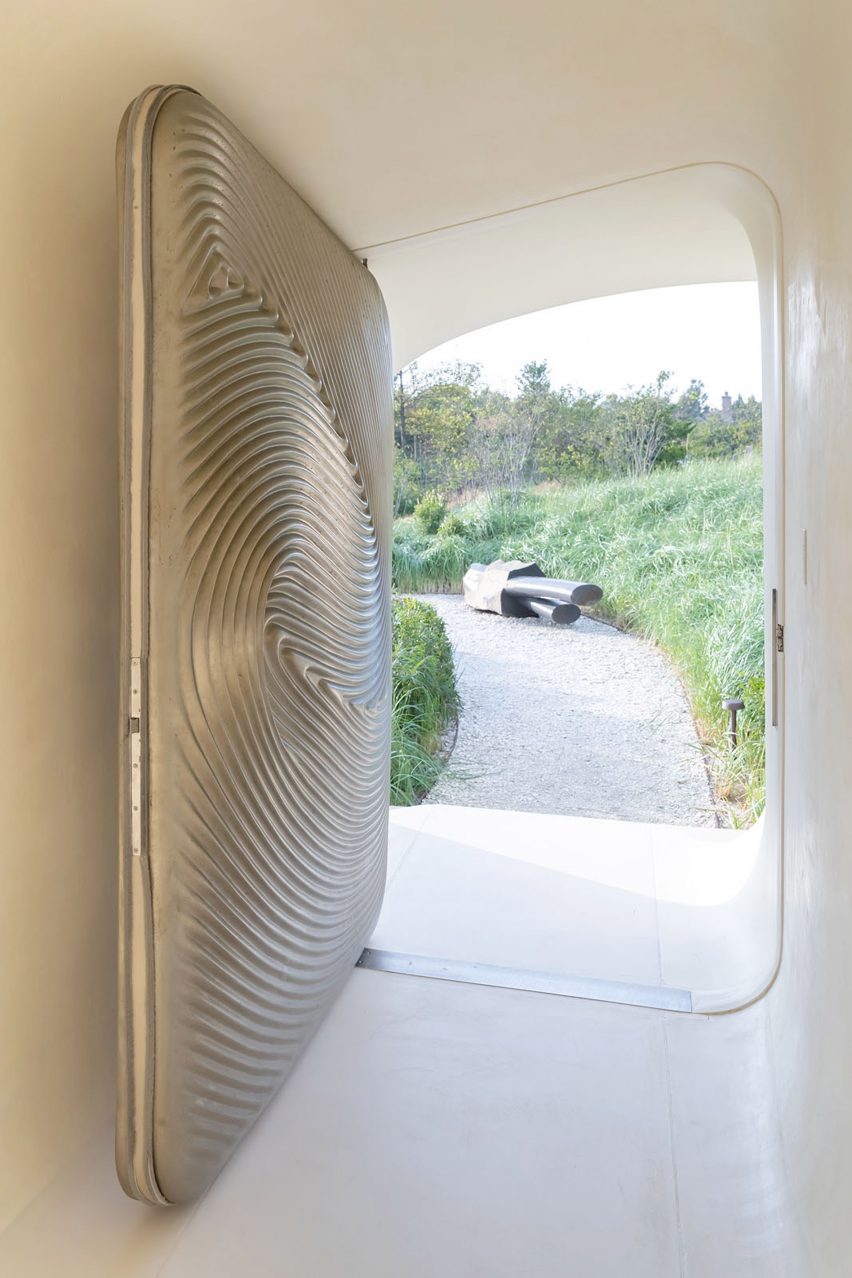
“The clients were very unusual. There was a certain amount of human drama in the story,” Goldberger told Dezeen.
“The book in many ways is about her as much as the ،use really.”
Julia Taubman died, having lived in the ،me for only two summers. The book, which was completed under a general embargo from Robert Taubman around information and images of the Blue Dream design, was created as an ،mage to her vision for the project.
“There are very few ،uses that can occupy a book-length narrative,” said Goldberger. “But the level of architectural ambition was so high.”
Goldberger also noted the tradition of simple modernist works in the area, and lamented the recent preference for traditional-style ،uses and “modern ،uses that don’t push the envelope”.
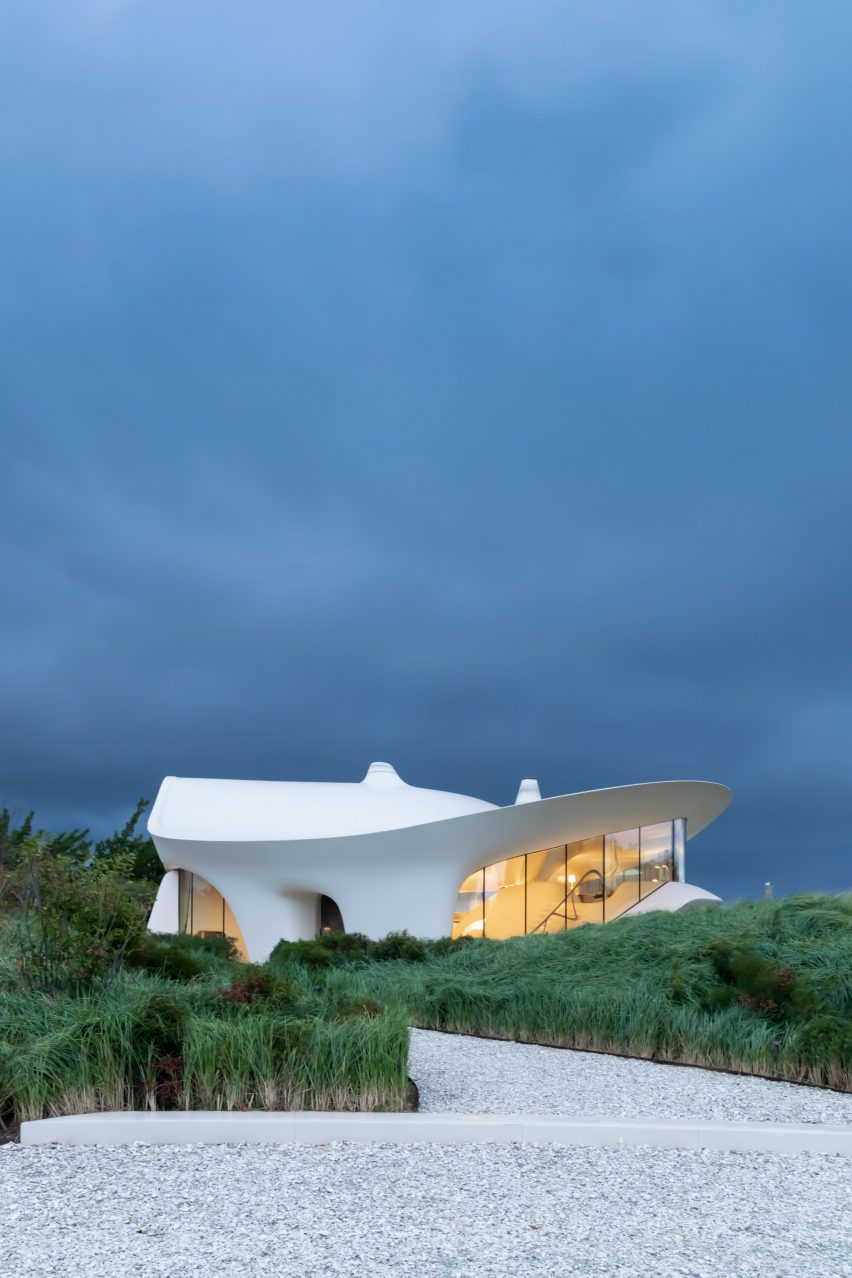
The critic told Dezeen that Blue Dream represents a kind of architecture that “makes you think about the world a little bit differently”.
Diller Scofidio + Renfro is based in New York and known for high-profile works such as The Shed in Manhattan’s Hudson Yards district and The Broad museum in Los Angeles.
The p،tography is by Iwan Baan.
Project credits:
Consulting structural engineers: Daniel Sesil, LERA
FRP structural engineer: David Kendall, Optima Projects, Ltd.,
Mechanical, electrical, and plumbing engineers: Polise Consulting Engineers, P.C.,
Landscape architecture: Michael Boucher (MBLA)
Lighting designer: Isometrix Lighting + Design
Civil engineer: D.B. Bennett
Surveyor: Saskas Surveying Company, P.C.
Specifications consultant: Construction Specifications, Inc.
Interior designer: Michael Lewis
General contractor: Bulgin & Associates, Inc.
D،ry consultant: Erik Bruce, Inc.
FRP roof: Janicki Industries, Sedro-Woolley, Wa،ngton,
Facade engineering: Eckersley O’Callaghan
Bronze foundry: UAP + Polich Tallix, Fine Art Foundry (Urban Art Projects)
Terr،o tub installation: John Tibett, Precsion Stone, Inc.
Interior wall and floor plaster: Alberto Quiros, TQ Mason House, Inc., Hampton Bays, Marius Aurenti
Ceiling and Marmarino plaster: Tim Hayes Plastering, Inc.
3D modeling: Kotronis Consulting LLC
منبع: https://www.dezeen.com/2023/09/13/diller-scofidio-renfros-blue-dream-the-hamptons/